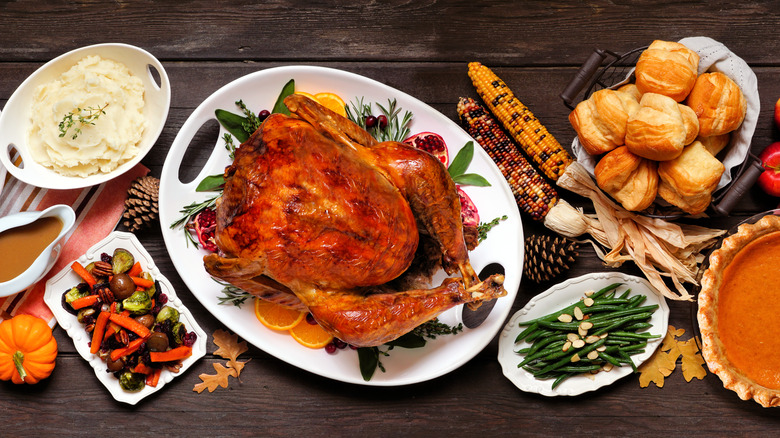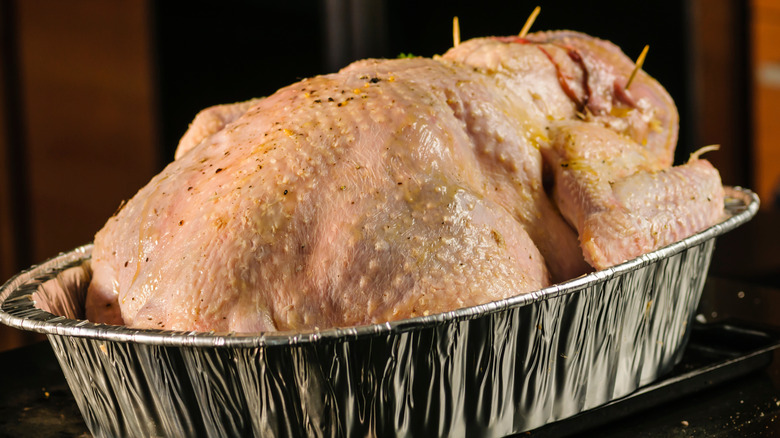Why You Should Start Roasting Your Thanksgiving Turkey Upside Down
"Don't mess with the mashed potatoes!" Cries like these are heard across holiday tables every year. Fights over the "only" way to make green bean casserole and why Grandma's turkey was the best have relatives resisting the urge to flip the bird at Auntie Sue. Afterall, holidays are about the familiarity of the dishes we love and look forward to every year.
If you want to get creative this holiday season with the table's crowning glory, the turkey, but don't want to start a food fight at the table, we found a sneaky way to break tradition — and no one will have to know.
With turkeys weighing an average of 30.5 pounds, nearly twice as much as in 1960, according to Insider, there is risk for a dry bird. A turkey's dark meat takes longer to cook than the light meat of the breast, so often by the time the thigh meat is finished, the breast meat is dry and overcooked. Andrew Carmellini with Epicurious explains that the breast sits up high closer to the top of the oven and the thighs are below in the roasting pan, missing all the circulating heat.
The result is an overcooked top and undercooked bottom.
Roast a turkey upside-down for even cooking
The hope for oven-mitt armed, apron-clad, early risers of the last Thursday of November is to turn things around and roast the turkey breast-side down. Kitchn explains that doing this takes the breast out of direct heat, protecting and insulating it in the savory moisture of whatever yummy ingredients are in the bottom of the roasting pan. In this position, the thighs will cook equally with the breast and as the fat drips down the bird it is naturally basted, according to AllRecipes.
While this is an easy and un-fussy method for a different approach, it doesn't produce a perfectly presentable bird, Kitchn admits. Some recipes suggest finishing roasting breast-side up to get crispier skin and preventing the chance of grid marks from the baking rack. But, it isn't necessary for a deliciously moist main dish and Good Housekeeping warns this can be dangerous with the risk of hot juices splashing out as you flip it. Letting the bird rest will ensure that all the juices seep back into the meat and that you're not risking burns when you flip the turkey over for carving (via Taste of Home).
No need to let your tradition-hugging guests know you changed things up for this year's feast. With a turkey this moist and delicious, they won't be asking any questions — only asking for more.

